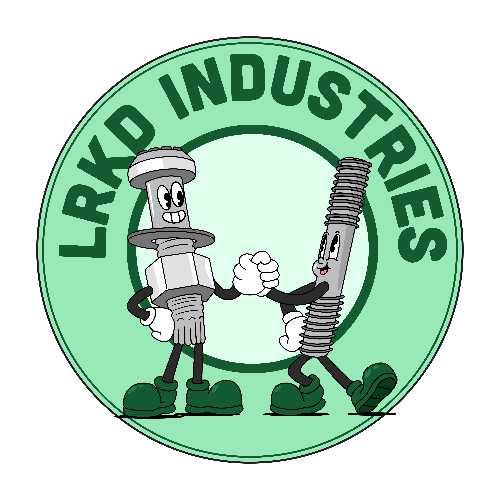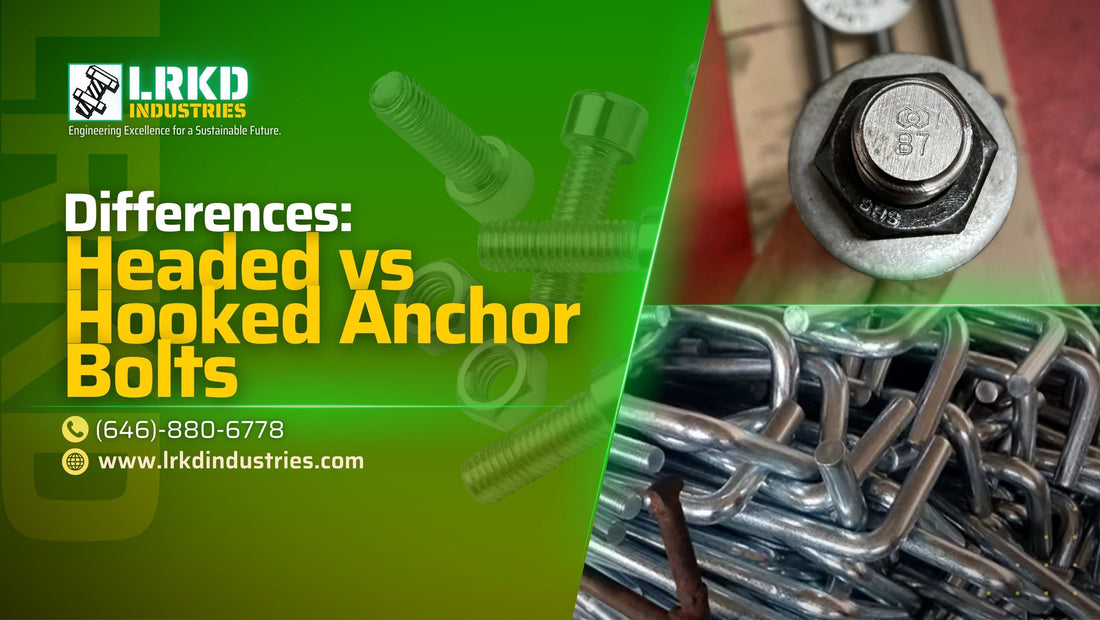In the world of construction, every bolt, beam, and bar serves a purpose, contributing to the integrity of the structure being built. Imagine the cables holding up a suspension bridge or the bolts securing the foundation of a skyscraper. These seemingly small components, like anchor bolts, carry immense responsibility. But which type of anchor bolt—headed or hooked—is the right choice for your project? Let’s break it down.
What Are Anchor Bolts, and Why Do They Matter?
Anchor bolts are essential components that connect structural and non-structural elements to concrete. They secure machinery, steel columns, and even entire building frames. In essence, they act as the unsung heroes of construction, bearing weight and absorbing forces to keep structures safe and sound.
Think about an aircraft cable system used in construction—it’s strong, flexible, and engineered for heavy-duty tasks. Anchor bolts work similarly, ensuring a seamless and robust connection between elements. Their role may not always be visible, but the stability they provide is undeniable.
Headed Anchor Bolts: When Strength and Stability Are Key
Headed anchor bolts feature a forged head at one end, resembling a bolt head you’d find in a standard screw. The head provides extra anchoring strength, especially when subjected to pull-out forces.
Applications
High-load structures: Think of buildings in earthquake-prone zones or high-wind areas. Headed bolts provide the kind of security that ensures stability when external forces challenge the structure.
Heavy machinery foundations: The head offers a robust grip within concrete, perfect for anchoring heavy equipment.
Why Choose Headed Bolts?
Load-bearing capacity: The headed design distributes force more effectively.
Ease of installation: With fewer complications, they are often the go-to choice for heavy-duty applications.
Reliability: Because of their simplicity and robust design, they reduce the likelihood of failure in critical scenarios.
Example
In 1994, the Northridge earthquake in California highlighted the need for stronger anchoring systems in construction. Structures with properly installed headed anchor bolts withstood the tremors better than those without, underlining the importance of choosing the right bolt for seismic zones.
Hooked Anchor Bolts: Versatile and Economical
Hooked anchor bolts, as the name suggests, have a hook or bend at one end. The hook helps secure the bolt within concrete by creating a mechanical lock.
Applications
Light to moderate loads: Hooked bolts are often used for tasks like attaching light poles, fences, or railings.
Temporary structures: Their versatility makes them ideal for applications where disassembly or adjustments might be needed.
Why Choose Hooked Bolts?
-
Cost-effective: Their simpler design often makes them more affordable.
-
Adaptability: The hook shape allows for a wide range of applications, making them a favorite for smaller projects.
-
Availability: Hooked bolts are widely accessible and can be customized for different lengths and diameters.
Example
When constructing temporary scaffolding for a large sports stadium, engineers opted for hooked anchor bolts. They provided sufficient anchorage without exceeding the project budget—a win-win scenario.
Headed vs. Hooked Anchor Bolts: Key Differences at a Glance
|
Feature |
Headed Bolts |
Hooked Bolts |
|
Design |
Forged head |
Hook or bent end |
|
Strength |
Higher load-bearing capacity |
Moderate load capacity |
|
Applications |
Heavy-duty, permanent |
Light-duty, temporary |
|
Cost |
Higher |
Lower |
|
Ease of Installation |
Straightforward |
Requires more precision |
How to Choose the Right Anchor Bolt for Your Project
The choice between headed and hooked anchor bolts boils down to your project’s specific needs. Here’s a quick checklist to guide you:
Assess the load requirements: For heavy loads, headed bolts are the obvious choice. For lighter loads, hooked bolts suffice.
Consider the environment: Are you working in a seismic zone? Opt for headed bolts for added stability.
Budget constraints: If cost is a significant factor, hooked bolts might be more practical for smaller or temporary installations.
Longevity of the project: For permanent structures, prioritize the durability and reliability of headed bolts.
The Big Picture: Every Bolt Has Its Role
In construction, there’s no one-size-fits-all solution, and that’s the beauty of it. Every project, whether it’s a towering skyscraper or a modest fence, deserves a thoughtful approach. Anchor bolts may seem like a small part of the puzzle, but choosing the right one—headed or hooked—can make a world of difference.
Next time you’re planning a project, ask yourself: What story will your anchor bolts tell? Will they secure something meant to last forever, or will they hold together something that’s just passing through?
Choosing the Right Anchor Bolt: Headed vs Hooked
Save your detailers some time!
Understanding the difference between headed and hooked anchor bolts is critical for ensuring structural integrity and installation efficiency. Whether you're preparing for a bid or working on an active jobsite, LRKD Industries helps simplify your selection process by offering expert insights and precise material assessments based on your construction plans.
This service is ideal for teams looking for fast, accurate comparisons and recommendations—without the manual guesswork.
Contact LRKD Industries now for this time-saving service!
👉 Submit your plans today for a FREE consultation and anchor bolt assessment.
📍 Address: 98 N Industry CT, Deer Park, NY 11729, US
📞 Phone: +1 646-880-6778
📧 Email: info@lrkdindustries.com
We can also convert your files into .dwg format for seamless integration with Tekla and other modeling systems—ensuring precision and compatibility at every step.
For more information about our anchor bolt products, click here.
When every bolt counts, accuracy isn't optional—it’s essential.


